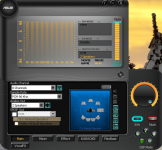Firstly thanks to ASUS for providing me with this sample to review! 
This is a new high end sound card from ASUS that has a lot to offer!
Features:
For more information on this sound card, visit here.
Packaging:
The sound card and accessories come in a nice attractive box with detailed information printed on most areas of the box.
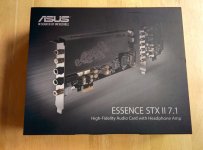
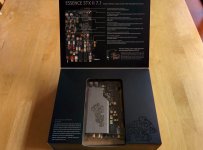
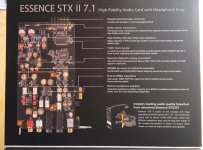
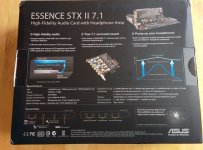
Once the box is removed, we are presented with this gorgeous looking main sound card furnished with a gun metal brushed finish and a lion shaped insignia.

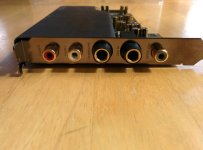

We also get another small package inside the main box, which contains the daughter board and accessories; IDE cable, 3.5mm to 6.3mm adapter, Op-amp swap kit, 3.5mm to RCA adaptor cable, S/PDIF TOSLINK optical adapter
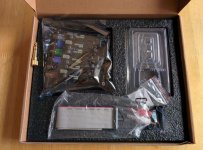
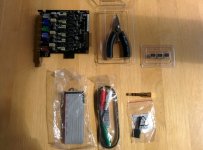

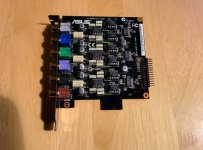

Under the padding, we have a CD, which contains software/drivers, user manual and a quick start guide:
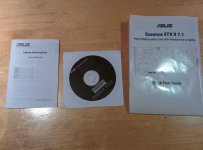
Installation:
Installing this sound card was straight forward and quick thanks to the easy to follow quick start guide. An IDE cable is used to connect the daughter board and main card and a molex power cable is required to power the sound card.
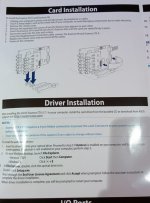

The daughterboard + sound card take up two PCI slots, only one PCI express slot is required though.
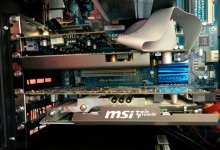
Software:
With the soundcard and software installed, lets have a look at control panel.
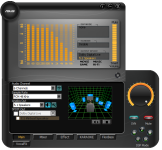
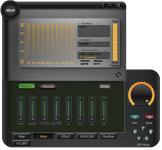
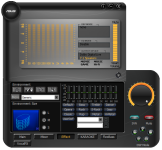
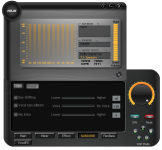
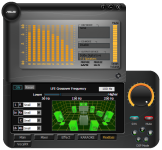
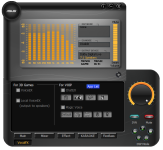
As you can see, there are plenty of options to mess around with and be able to fine tune the sound to your liking.
Personally, I find the software "overall" a little dated looking especially when you compare it to ASUS's networking software/control panel for their wireless adapters and routers.
Sound Quality:
Onto the most important area now and unfortunately, you need powered analogue speakers to use with this sound card. Besides, I wasn't able to use my Creative T6100 5.1 setup due to the front right speaker using a DIN connection anyway so had to use a Yamaha TSS-1 5.1 + amplifier setup connected via the S/PDIF connection.
I tried various audio files out i.e. DTS, FLAC, MP3
Using the yamaha TSS-1 5.1 + amplifier system connected via S/PDIF provided an amazing surround sound experience, clarity was superb and the surround effect couldn't be any more immersive. However, to my ears, there was not much difference between my motherboard's (GA-P55-UD3) onboard S/PDIF connection and the S/PDIF connection on the sound card, however, by using the ASUS S/PDIF connection you gain access to more controls/settings, which would allow you to further fine tune the sound to your liking.
I wasn't able to test out the Plantronics 780 headset since it uses a USB connection thus it would bypass the sound card completely, however, I tried out Sennheiser HD 202 headphones, which provided a superb listening experience, truly blows my Plantronics 780 headset away! The clarity and just sheer quality was mind blowing, I could also hear more ambient noises in films and games.
For the true audiophiles out there, ASUS have given you even more options to adjust the tones by providing three additional op-amps (2 x LME49720 & 1 x MUSES8820)

EDIT:
Just to provide a bit of an update.
I have only recently been able to make proper use of this sound card. I bought the Edifier RT1600 speakers about 3/4 months ago and had been using them with my motherboard's onboard sound and thought they sounded amazing compared to my previous yamaha and creative speakers.
In the last week, I reinstalled the ASUS essence STX II soundcard and connected the Edifier speakers to it and wow! The difference in quality is truly amazing, as you can probably imagine, it is hard to describe how something sounds I would say the most noticeable differences are clarity and depth. The experience of watching content on the PC has now excelled as the soundcard greatly enhances the immersive nature of the audio content. There is a much more dynamic audio environment, imbuing tones with a greater punch and depth, whilst enhancing background sounds with nuanced subtleties.
I would say the most noticeable differences are clarity and depth. The experience of watching content on the PC has now excelled as the soundcard greatly enhances the immersive nature of the audio content. There is a much more dynamic audio environment, imbuing tones with a greater punch and depth, whilst enhancing background sounds with nuanced subtleties.
Watching the opening scene of Star Trek Into Darkness was a great way to demonstrate the sound i.e. the volcanic ash noise, the bristling of the leaves, and the creatures making funny noises in the red jungle setting.
Lately, I have also been playing Alien Isolation, lets just say, the sound effects in this game with this setup are sending goosebumps down my spine.....
I have spent a few days playing around with settings and reading up on what other people's settings are and have settled with this config now:
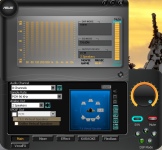
I watch films and play games more than listening to music. There are a lot of different opinions out there when it comes to sample rate, the majority use 44.1KHz for music and 48KHz for films, personally I find the default setting of 96KHz to sound the best "overall"
I also messed around with the EQ, dolby virtual surround sound settings again and whilst they all sound nice in their own way, I have decided to stick with HI-FI mode so that there is no alterations to the sound i.e. you are getting as close to the original recording as possible.
Like I said in my review, sound is a very personal thing so you will just have to play about and choose what sounds the best to your ears. I am still in the process of learning and trying to understand the subtleties myself!
Conclusion:
Unfortunately the lack of powered analogue speakers didn't allow me to experience the full potential of this sound card, however, using the Sennheiser HD202 headphones with this soundcard provides an amazing listening experience for all types of media, it makes my plantronics 780 headset sound awful in comparison, which I originally thought were superb.
I am sure with better headphones such as the Creative Aurvana Live, the sound experience would be even better!
If you are using satellite speakers, you "need" to have an amplifier as well, otherwise the volume is far too low.
As for pricing, there is no official word yet.... but I would expect it to come in at around £190
For now, I can definitely recommend this card for headphone users and people who like lots of ways to fine tune their sound.
Pros:
Cons:

This is a new high end sound card from ASUS that has a lot to offer!
Features:
- Industry-leading 124dB SNR (signal-to-noise ratio) audio quality inherited from the revolutionary and widely-acclaimed Xonar Essence ST/STX
- Ultra-low jitter with premium TCXO clock source
- Clean and consistent power supply thanks to high-fidelity low-dropout (LDO) regulators and WIMA® capacitors for uncompromising sound
- Top-notch headphone amplifier supports up to 600ohm-headphone impedance with additional gain for in-ear monitors (IEMs)
- Exclusive op-amp swap kit includes three op-amps and tool for easy tone tuning
- Celebrated MUSES op-amps deliver true-to-life musicality
- Ultra-fidelity (120dB SNR) 7.1-channel output via the exclusive daughterboard
For more information on this sound card, visit here.
Packaging:
The sound card and accessories come in a nice attractive box with detailed information printed on most areas of the box.




Once the box is removed, we are presented with this gorgeous looking main sound card furnished with a gun metal brushed finish and a lion shaped insignia.



We also get another small package inside the main box, which contains the daughter board and accessories; IDE cable, 3.5mm to 6.3mm adapter, Op-amp swap kit, 3.5mm to RCA adaptor cable, S/PDIF TOSLINK optical adapter





Under the padding, we have a CD, which contains software/drivers, user manual and a quick start guide:

Installation:
Installing this sound card was straight forward and quick thanks to the easy to follow quick start guide. An IDE cable is used to connect the daughter board and main card and a molex power cable is required to power the sound card.


The daughterboard + sound card take up two PCI slots, only one PCI express slot is required though.

Software:
With the soundcard and software installed, lets have a look at control panel.






As you can see, there are plenty of options to mess around with and be able to fine tune the sound to your liking.
Personally, I find the software "overall" a little dated looking especially when you compare it to ASUS's networking software/control panel for their wireless adapters and routers.
Sound Quality:
Onto the most important area now and unfortunately, you need powered analogue speakers to use with this sound card. Besides, I wasn't able to use my Creative T6100 5.1 setup due to the front right speaker using a DIN connection anyway so had to use a Yamaha TSS-1 5.1 + amplifier setup connected via the S/PDIF connection.
I tried various audio files out i.e. DTS, FLAC, MP3
Using the yamaha TSS-1 5.1 + amplifier system connected via S/PDIF provided an amazing surround sound experience, clarity was superb and the surround effect couldn't be any more immersive. However, to my ears, there was not much difference between my motherboard's (GA-P55-UD3) onboard S/PDIF connection and the S/PDIF connection on the sound card, however, by using the ASUS S/PDIF connection you gain access to more controls/settings, which would allow you to further fine tune the sound to your liking.
I wasn't able to test out the Plantronics 780 headset since it uses a USB connection thus it would bypass the sound card completely, however, I tried out Sennheiser HD 202 headphones, which provided a superb listening experience, truly blows my Plantronics 780 headset away! The clarity and just sheer quality was mind blowing, I could also hear more ambient noises in films and games.
For the true audiophiles out there, ASUS have given you even more options to adjust the tones by providing three additional op-amps (2 x LME49720 & 1 x MUSES8820)

EDIT:
Just to provide a bit of an update.
I have only recently been able to make proper use of this sound card. I bought the Edifier RT1600 speakers about 3/4 months ago and had been using them with my motherboard's onboard sound and thought they sounded amazing compared to my previous yamaha and creative speakers.
In the last week, I reinstalled the ASUS essence STX II soundcard and connected the Edifier speakers to it and wow! The difference in quality is truly amazing, as you can probably imagine, it is hard to describe how something sounds
 I would say the most noticeable differences are clarity and depth. The experience of watching content on the PC has now excelled as the soundcard greatly enhances the immersive nature of the audio content. There is a much more dynamic audio environment, imbuing tones with a greater punch and depth, whilst enhancing background sounds with nuanced subtleties.
I would say the most noticeable differences are clarity and depth. The experience of watching content on the PC has now excelled as the soundcard greatly enhances the immersive nature of the audio content. There is a much more dynamic audio environment, imbuing tones with a greater punch and depth, whilst enhancing background sounds with nuanced subtleties.Watching the opening scene of Star Trek Into Darkness was a great way to demonstrate the sound i.e. the volcanic ash noise, the bristling of the leaves, and the creatures making funny noises in the red jungle setting.
Lately, I have also been playing Alien Isolation, lets just say, the sound effects in this game with this setup are sending goosebumps down my spine.....
I have spent a few days playing around with settings and reading up on what other people's settings are and have settled with this config now:

I watch films and play games more than listening to music. There are a lot of different opinions out there when it comes to sample rate, the majority use 44.1KHz for music and 48KHz for films, personally I find the default setting of 96KHz to sound the best "overall"
I also messed around with the EQ, dolby virtual surround sound settings again and whilst they all sound nice in their own way, I have decided to stick with HI-FI mode so that there is no alterations to the sound i.e. you are getting as close to the original recording as possible.
Like I said in my review, sound is a very personal thing so you will just have to play about and choose what sounds the best to your ears. I am still in the process of learning and trying to understand the subtleties myself!
Conclusion:
Unfortunately the lack of powered analogue speakers didn't allow me to experience the full potential of this sound card, however, using the Sennheiser HD202 headphones with this soundcard provides an amazing listening experience for all types of media, it makes my plantronics 780 headset sound awful in comparison, which I originally thought were superb.
I am sure with better headphones such as the Creative Aurvana Live, the sound experience would be even better!
If you are using satellite speakers, you "need" to have an amplifier as well, otherwise the volume is far too low.
As for pricing, there is no official word yet.... but I would expect it to come in at around £190
For now, I can definitely recommend this card for headphone users and people who like lots of ways to fine tune their sound.
Pros:
- Amazing quality using headphones and Active speakers
- Plenty of software features
- Swappable op-amps
Cons:
- Software UI could be better designed
- Not able to "drive" satellite speakers, need an amplifier to have acceptable volume levels
Last edited:



